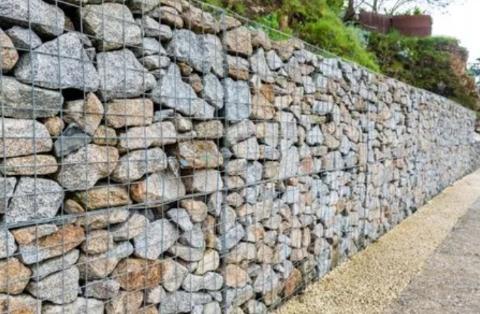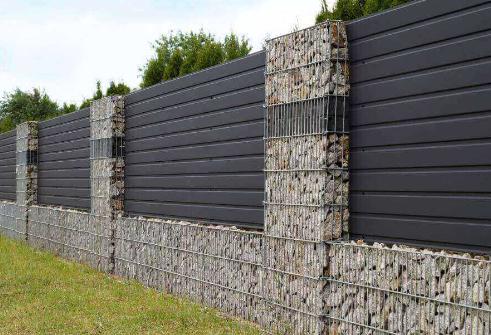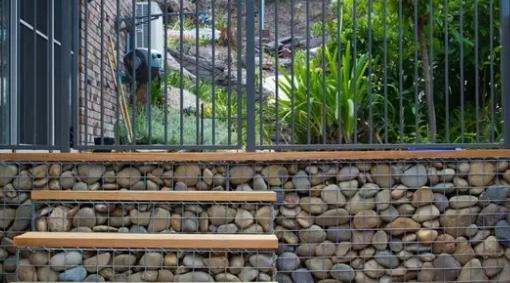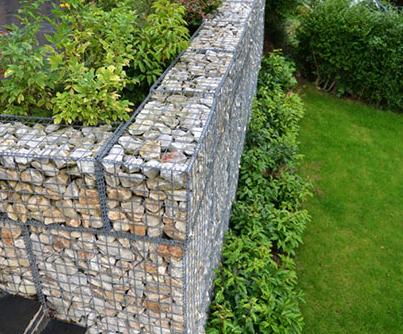




Table of Contents
- Gabion Walls: An Overview
- Gabion Structures
- Gabion Retaining Walls
- Gabion Baskets and Wire Mesh
- Faq's
Gabion Walls: An Overview
Gabion walls have emerged as a versatile and sustainable solution for various landscaping and construction needs. Comprising wire mesh baskets filled with stones or other materials, gabion walls offer strength, durability, and aesthetic appeal. In this comprehensive guide, we'll explore the uses, construction techniques, and benefits of gabion walls, along with practical insights for incorporating them into your projects. Gabion walls are flexible structures made of wire mesh baskets filled with rocks, stones, or recycled materials. They serve multiple purposes, including retaining soil, preventing erosion, creating decorative features, and providing noise barriers.
 Gabion Wall
Gabion Wall
Gabion Structures
Gabion structures encompass a wide range of applications, from small garden walls to large-scale architectural features. They can be used to create seating areas, planters, terraces, and even sculptural elements in landscape design.
 Gabion Wall Structure
Gabion Wall Structure
Gabion Retaining Walls
Gabion retaining walls are a popular choice for stabilizing slopes, preventing soil erosion, and creating level terraces on uneven terrain. The flexibility of gabion walls allows them to adapt to the natural contours of the landscape while providing effective structural support. Construction of gabion walls typically involves assembling wire mesh baskets, filling them with suitable materials, and securely stacking or interlocking them to create the desired structure. Proper installation techniques are essential for ensuring the stability and longevity of gabion walls.
 Gabion Retaining Wall
Gabion Retaining Wall
Gabion Baskets and Wire Mesh
Gabion baskets, usually made of galvanized steel or PVC-coated wire mesh, provide the framework for gabion walls. The choice of wire mesh size and material depends on the intended use and environmental conditions. Additionally, using high-quality wire mesh ensures the durability and strength of gabion structures.
 Gabion Wire Mesh
Gabion Wire Mesh
explore further
Latest from Contemporary ideas
More from Innovations
Resources
Dwello, for every home buyer, is a way to go from 'I feel' to 'I know', at no extra cost.



